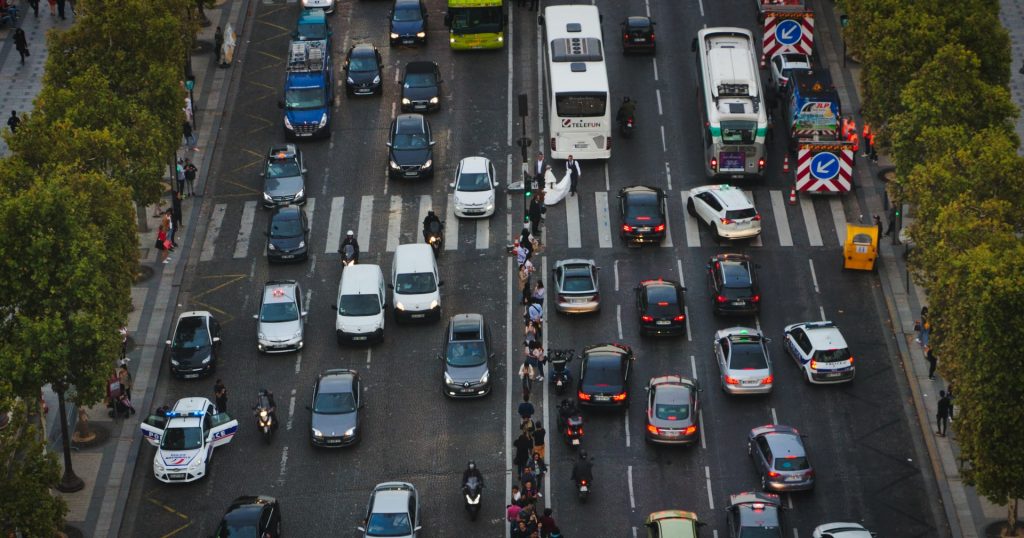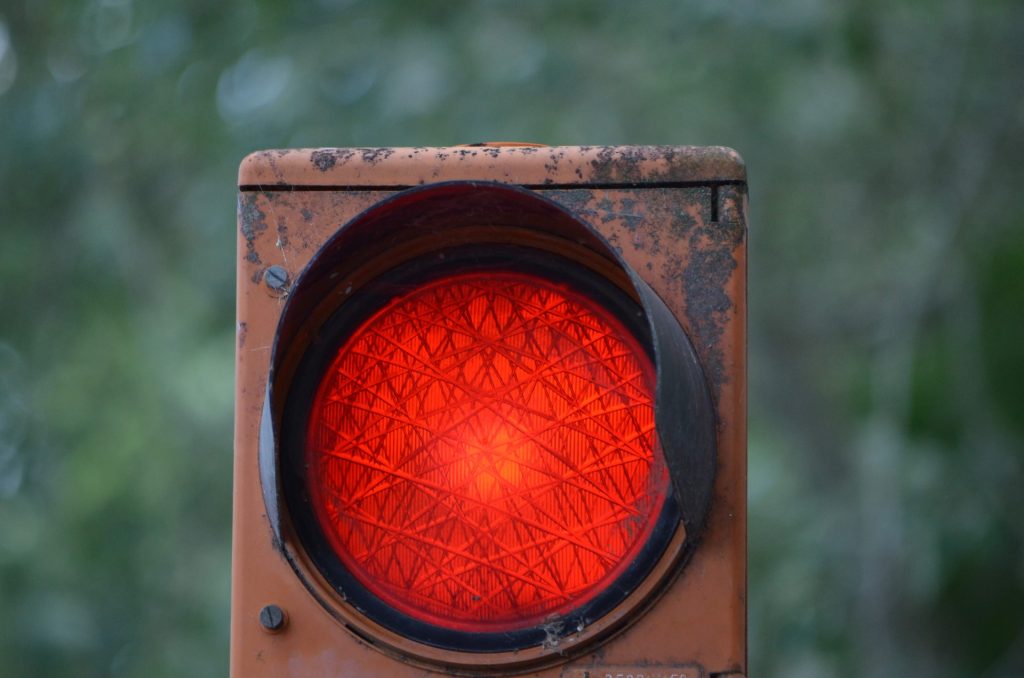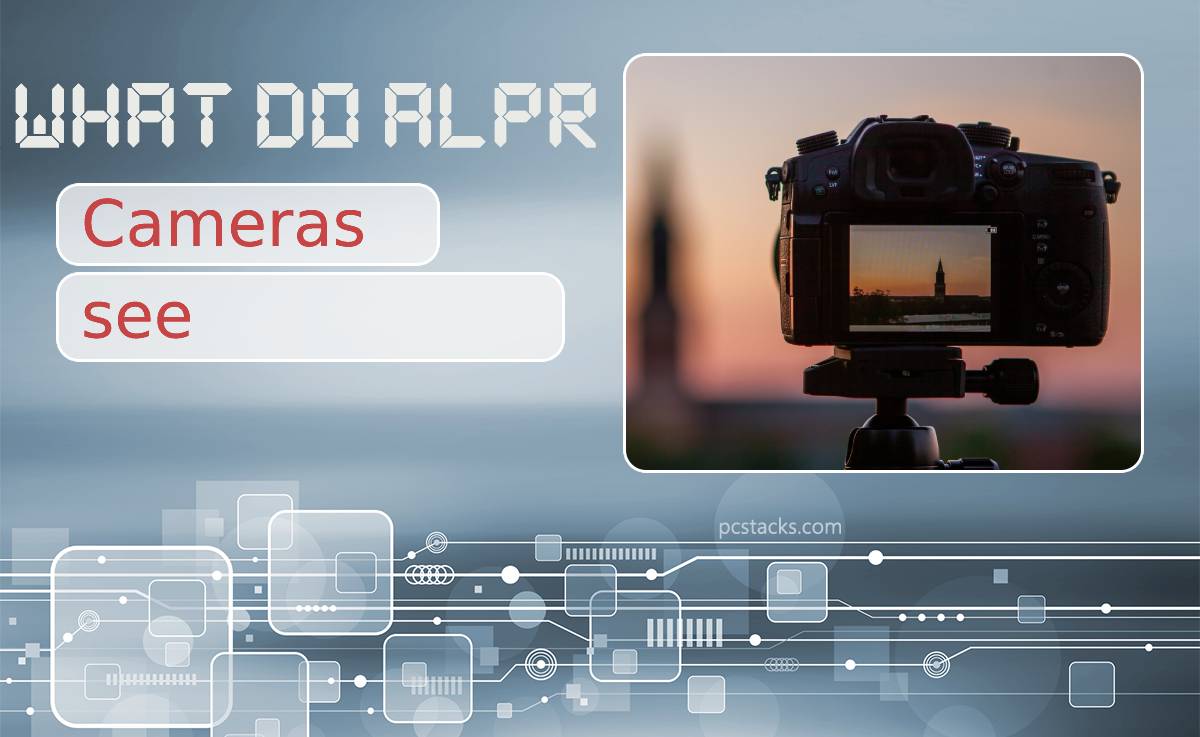ALPR (Automatic License Plate Recognition) cameras “see” whatever is in the field of their lens, like any other camera. When they take a picture of a vehicle, the initial result is a digital image like the one you get on your phone camera. The unique ability that makes them “ALPR” is their ability to process the image, identify the license plate in it, and make a separate digital image of the license plate.
Next, they apply OCR (Optical Character Recognition) technology to the license plate image and “read” the plate number and other information on the plate. They can store this data in a human-readable form in a database or connect with other software and compare it with other databases. This connected system can now identify vehicle ownership, where the vehicle has been, if it’s been involved in any crimes, etc. This ability is limited only by the scope of the connected database.
Optional features and specialized applications of these cameras and their connected systems give them the ability to:
1. Control traffic by providing helpful information to authorities who then take more efficient action by knowing exactly where to focus their attention.
2. Measure vehicle speeds, identifying speeders for live-action by authorities. They can also penalize speeders by assessing a fine and automatically notifying the vehicle’s owner.
3. Collect tolls automatically by monitoring all traffic passing a tolling location and invoicing vehicles’ owners. Regular users of the facility can arrange to pay tolls automatically by having the system charge their credit cards or bank accounts.
In this article, we’ll look in more detail at these applications and mention some others you may find interesting and valuable. The possibilities are virtually limitless. See how Adaptive Recognition’s clients all over the world have found creative uses for their adaptable devices.
Table of Contents
Traffic Control

All over the world, more and more people are choosing urban life. As cities grow in population, traffic volumes increase, and it is increasingly challenging to provide the infrastructure people need to move efficiently. Not only must governments keep up with current needs, but they must also predict future requirements.
ALPR technology is finding increasing utility in monitoring and analyzing traffic flow. It can provide helpful information about types of vehicles, speed, volume, and direction of traffic flow at various times of the day, week, and year. With ALPR monitoring, traffic flow patterns and trends become apparent.
Police Surveillance

Using ALPR cameras mounted inside or on top of patrol cars, police officers can identify violators, choke points, and other disruptions to traffic flow.
With ALPR’s ability to instantaneously identify a vehicle and its owner without a radio call, the police can take whatever immediate action is appropriate. They can also identify stolen vehicles and known criminals and terrorists.
Speed Measurement and Enforcement

Roads are designed to facilitate smoother traffic flow, encouraging drivers to go faster. Cars are faster and more comfortable at higher speeds. Higher speeds result in more severe accidents. With ALPR cameras designed to measure speeds and identify violators, speed enforcement is greatly enhanced.
The camera identifying a speeder can either alert the authorities or even assess a fine and bill the vehicle’s owner without human intervention. Identifying and controlling speed can reduce fatal accidents by as much as 50%.
The S1 portable speed and traffic monitoring camera measure speed as high as 300 km/h (186 MPH) from distances up to 1 KM. It includes a “blacklist” feature that can identify cars with unpaid insurance and single out stolen vehicles. These features of ALPR technology can benefit you as a fleet owner. They help you monitor the performance of your drivers and improve the safety of your operation.
Red Light Enforcement

Speeders are usually in a hurry. Drivers in a hurry are tempted to run red lights – one of the most dangerous things a driver can do. It’s a significant cause of high-injury and fatal accidents. The good news is the S1 ALPR camera identifies red light violators too.
Toll Collection
As ALPR cameras have developed to read license plates on faster-moving vehicles, toll booths and plazas have been almost eliminated. Many benefits result from this development:
- Smoother traffic flow – toll facilities where cars had to stop or slow down were significant causes of congestion.
- Enhanced safety – along with the congestion, the stop-and-go traffic was a significant cause of accidents.
- More efficient use of labor – human toll collectors, can now do more productive work.
- Landscape improvement – toll booths and plazas were always unattractive features. Trash and car parts always seemed to find their way to these places.
Toll collection is a simple matter for an ALPR camera. Usually mounted on a gantry above traffic, it can see all the vehicles that pass under it, identify the owners, and invoice them. Regular users may opt to register their credit cards or bank information to have the camera automatically charge their accounts.
Today you’ll see toll booths only in the lowest volume locations, where they have little impact on traffic flow. As you can see, ALPR cameras have greatly improved traffic management and safety.
Other applications of this and related technology include:
- Ferry access control
- Parking lot management
- Enhanced ATM capability at banks
- Airport entry and exit
- Border crossings
- Retail store operations
- EV (Electric Vehicle) charging stations
You’ll find these stories and more here. Check them out and learn more about how Adaptive Recognition can address your ALPR and other ID-reading needs.




